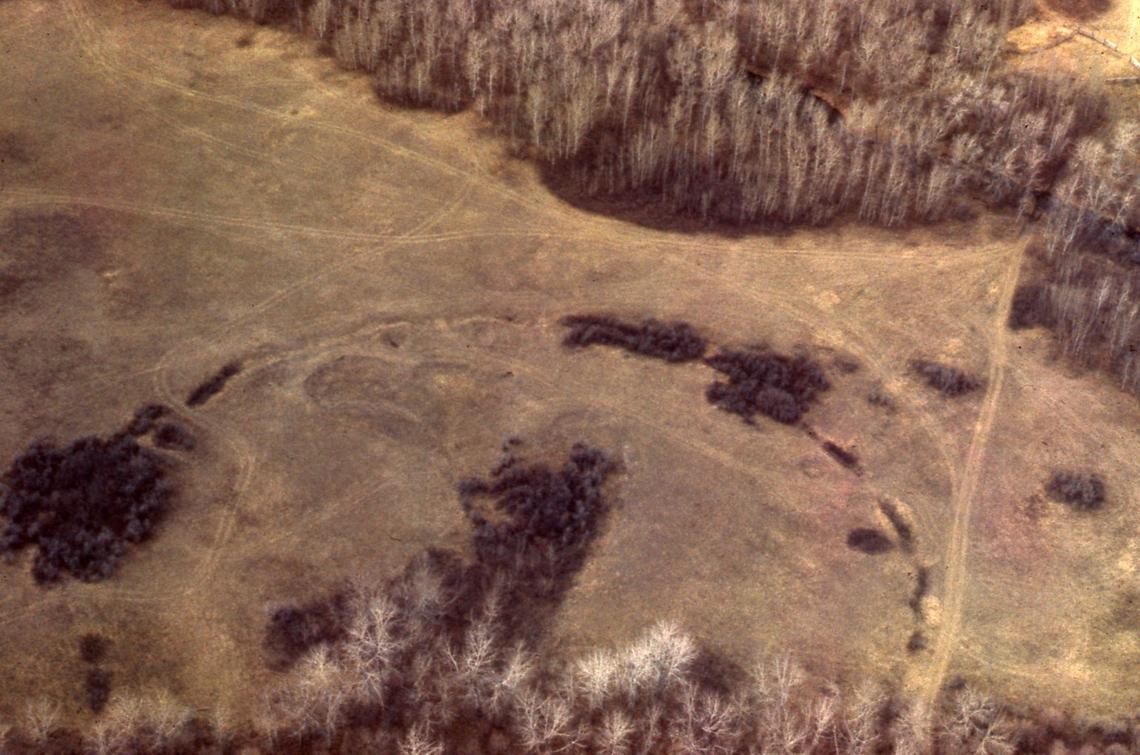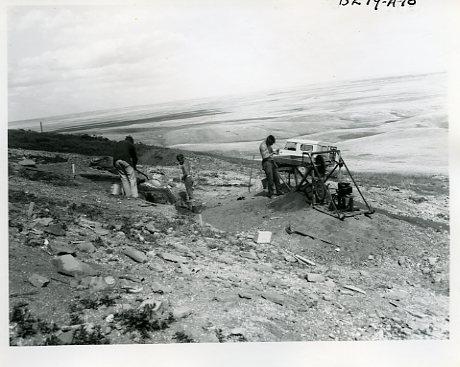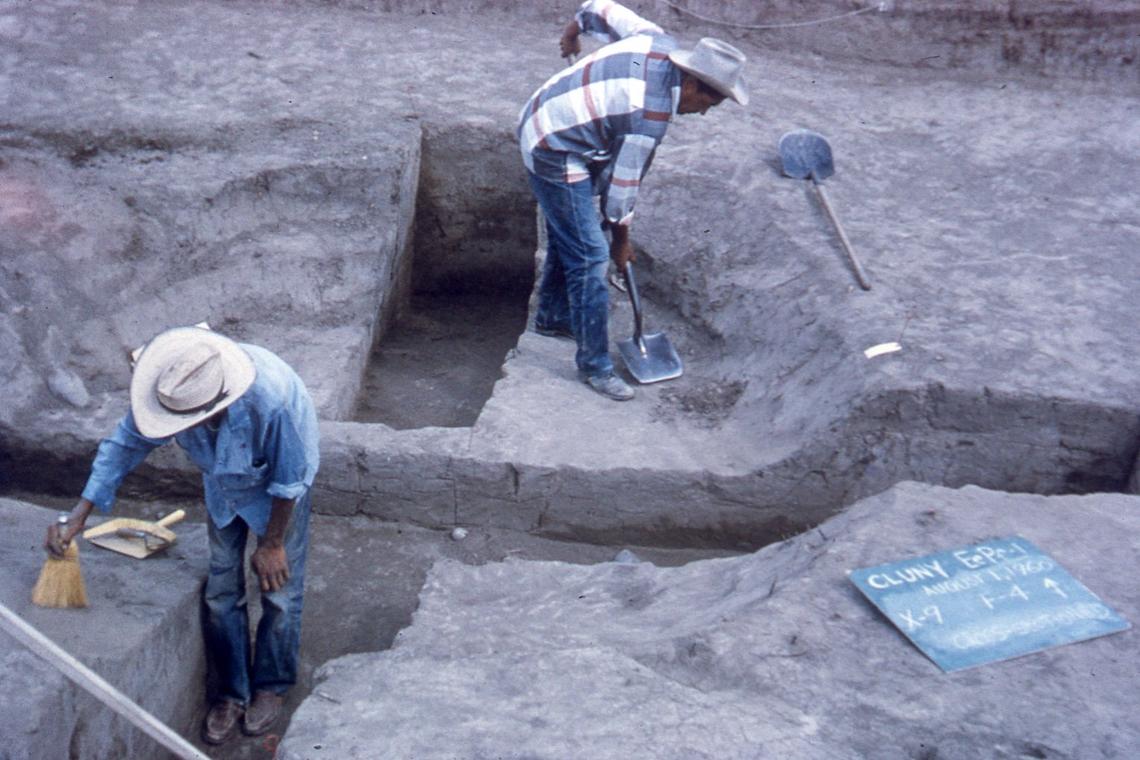June 20, 2016
University of Calgary partnership with First Nations goes back more than 50 years
In the mid-90s, when University of Calgary archaeology professor Gerald Oetelaar was called in to mitigate archaeological sites before any work could begin to build the Calgary community of Tuscany, he was following in the footsteps of his predecessors who had worked to set Alberta apart from other provinces in protecting indigenous heritage.
The archaeological work, done in partnership with the First Nations and Carma Developers Ltd., was mandated by the Alberta Heritage Act (now the Historical Resources Act) — first-of-its-kind legislation which the co-founder of the Department of Archaeology, Richard Forbis, had been instrumental in developing. A native of Montana, Forbis and colleague Richard “Scotty” MacNeish founded the department at the University of Calgary not long after the university gained autonomy from the University of Alberta in 1966.
“The University of Calgary’s archaeology department has had a very longstanding relationship with the aboriginal community and in particular, the Blackfoot community,” says Oetelaar. “That all started with Dr. Richard Forbis.”

Richard G. Forbis mapping the Majorville Medicine Wheel in the 1970s.
Department of Anthropology and Archaeology
Survey of Alberta
Originally hired in the mid-1950s by philanthropist and oilman Eric Harvie to survey Alberta for important archaeological sites, Forbis visited the relatively undisturbed Head-Smashed-In Buffalo Jump in 1958. By 1964, collectors had seriously damaged the site in their quest for artifacts.
Determined to protect the site, Forbis requested and received funding from the Glenbow-Alberta Institute in 1965 and hired Brian Reeves, his graduate student, to direct systematic excavations in 1965 and 1966. After receiving his PhD in 1970, Reeves obtained funding in 1972 from Canada Council to conduct additional excavations at Head-Smashed-In.
- Tuesday is National Aboriginal Day in Canada.
Later, Forbis and Reeves, along with other graduates from the University of Calgary, were instrumental in designating Head-Smashed-In as a UNESCO World Heritage site in 1981. Working with members of the Archaeological Survey of Alberta, Forbis and Reeves helped set up the interpretive centre, insisting that the Blackfoot people be directly involved and able to share their own history of the site.
“In the early years, Dr. Forbis was in regular contact with the Blackfoot and understood what the archaeological sites meant to them,” says Oetelaar. “He got the information about Head-Smashed-In from the Blackfoot while conducting surveys in the 1950s and the collaborative approach he initiated has been vital to the research that’s been done at the University of Calgary since then.”

Aerial view of the Cluny Fortified Village before the onset of excavations by Richard Forbis.
Department of Anthropology and Archaeology
Legislation
Forbis was also a key figure in developing the 1973 Alberta Heritage Act. Never before had provinces required historical resource assessments to be carried out ahead of development.
Oetelaar was a beneficiary of the collaborative tradition and this legislation when Carma Developers Ltd approached him to excavate sites in Tuscany.
- Join Elder Reg Crowshoe at St. Patrick’s Island on Tuesday as he shares stories of connection to the land. Register for Campfire Chats below
“That was such a valuable experience from a teaching perspective,” says Oetelaar. “In addition to the normal field school participants, we had First Nations students and the public involved in the dig. It gave us the opportunity to share how there is more than one way of looking at everything. To the Blackfoot, these weren’t just things we were digging up, they were still alive and part of their culture. Students soon learned to recognize the materials being uncovered were important not only from a practical point of view but also a spiritual and cultural point of view.”

1965-66 excavations at Head-Smashed-In Buffalo Jump.
Department of Anthropology and Archaeology
Public education
Oetelaar, who was the university’s archaeology field director at the time, also developed a high school archaeology program which allowed budding teenage archaeologists to work alongside graduate and undergraduate students. In addition, he and his students designed and offered an elementary school program in a number of schools across the city.
Public education has always been a big part of the work of the Department of Archaeology and Anthropology. Dale Walde, who became field school director in 1996, continued the tradition of working with First Nations. He and Oetelaar have helped develop public education programs around important indigenous sites across southern Alberta.
Just last year, Walde received the prestigious Public Communication Award on behalf of the University of Calgary’s Program for Public Archaeology. Launched in 2014, the public archaeology program brings members of the public to participate in summer archaeological digs. These digs involve top researchers and graduate students as well as indigenous peoples. The past two summers, participants have taken part in the university’s Archaeology Field School at the Cluny Fortified Village, the only known fortified village on the Canadian Plains located near the Blackfoot Crossing Historical Park and Interpretive Centre on the Siksika Nation.

Blackfoot workers excavating at the Cluny Fortified Village in 1960.
Department of Anthropology and Archaeology
MOH-KINS-TSIS
More recently, Oetelaar served on the advisory board for the MOH-KINS-TSIS: Calgary Heritage Roundtable, a day-long workshop organized by the National Trust for Canada to initiate and encourage groundbreaking discussion on the protection of Calgary’s indigenous heritage sites.
MOH-KINS-TSIS is the Blackfoot term for the “elbow,” an important landmark near where the Elbow River meets the Bow River.
To Oetelaar, it is important for the indigenous and non-indigenous perspectives to carry equal weight in determining how to best protect these sites. “Today, most people doing this work in southern Alberta incorporate Blackfoot people in their decision-making,” says Oetelaar. “It’s so important that we continue to collaborate to ensure the best possible outcome.”
Bring your blanket and curl up near the campfire to hear stories about Calgary’s rich indigenous history and how we can work together to continue to build the city we are proud to call home. The University of Calgary and the Calgary Stampede present Campfire Chats on Tuesday, June 21, 2016 in recognition of National Aboriginal Day. The free family event will take place at St. Patrick’s Island. Hear Elder Reg Crowshoe, former chief of the Piikuni First Nation, share stories of the people’s connection to the land. Enjoy a performance by Vanessa Stiffarm, 2016 Calgary Stampede Indian Princess. Activities begin at 1 p.m., the campfire chat will begin at 6:30.
The pressures of our rapidly growing global population are driving unprecedented changes in our social, political, cultural and natural systems. The University of Calgary's Human Dynamics in a Changing World research strategy is addressing our need to understand how we adapt to rapid change, to ensure our security and quality of life.
